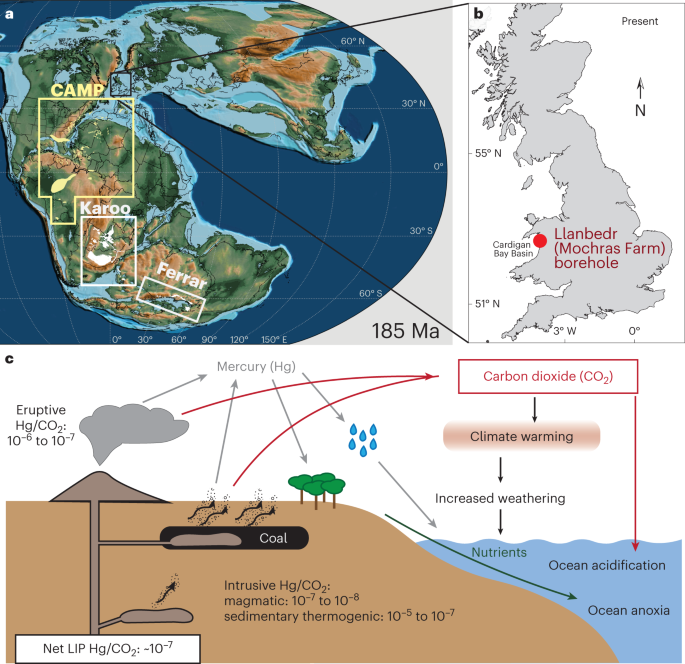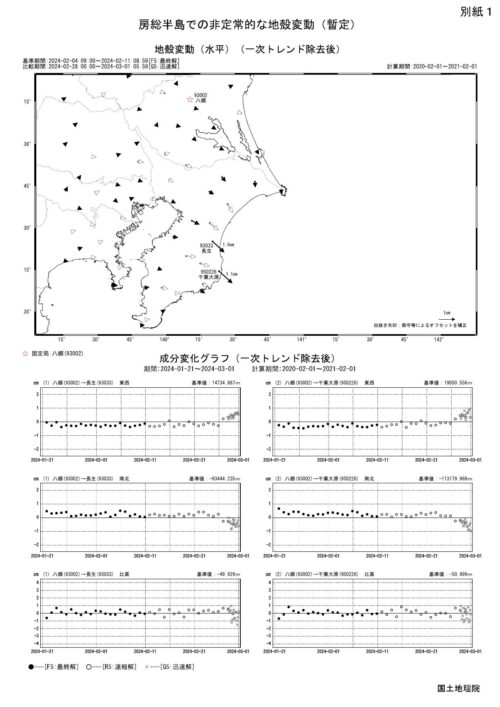2024-02-29 ペンシルベニア州立大学(PennState)
<関連情報>
- https://www.psu.edu/news/research/story/mercury-rising-study-sheds-new-light-ancient-volcanoes-environmental-impact/
- https://www.nature.com/articles/s41561-024-01378-5
ジュラ紀初期の大規模火成岩地域の炭素排出が堆積水銀によって制約される Early Jurassic large igneous province carbon emissions constrained by sedimentary mercury
Isabel M. Fendley,Joost Frieling,Tamsin A. Mather,Micha Ruhl,Stephen P. Hesselbo & Hugh C. Jenkyns
Nature Geoscience Published:26 February 2024
DOI:https://doi.org/10.1038/s41561-024-01378-5

Abstract
Large igneous province eruptions and their carbon emissions often coincide with, and are hypothesized to have driven, severe environmental perturbations in the geological past. However, the vast scale of large igneous provinces and uncertainties in magmatic volatile contents and radioisotopic dates limit our ability to resolve gas emissions in detail over time. Here we employ high-resolution (~5–200 kyr) sedimentary mercury data from the Llanbedr (Mochras Farm) borehole, Wales, to derive quantitative large igneous province degassing estimates over a 20-million-year-long Early Jurassic interval (195–175 million years ago). Intervals of relatively elevated sedimentary mercury coincide with episodes of carbon-cycle change, including the Toarcian Oceanic Anoxic Event (183–182 million years ago). We use excess mercury loading to estimate large igneous province-associated carbon emissions, revealing that multi-millennial episodes of activity plausibly drove recognized PCO2 and temperature increases. However, previous carbon-cycle model-based carbon emission scenarios require faster and larger carbon inputs than our proposed emissions. Resolving this discrepancy may require climate–carbon-cycle feedbacks or co-emitted gases to substantially exacerbate the carbon-cycle response, processes potentially underestimated in current models. Our long and near-continuous record of Early Jurassic large igneous province activity demonstrates mercury’s potential as a tool to resolve past carbon fluxes.



